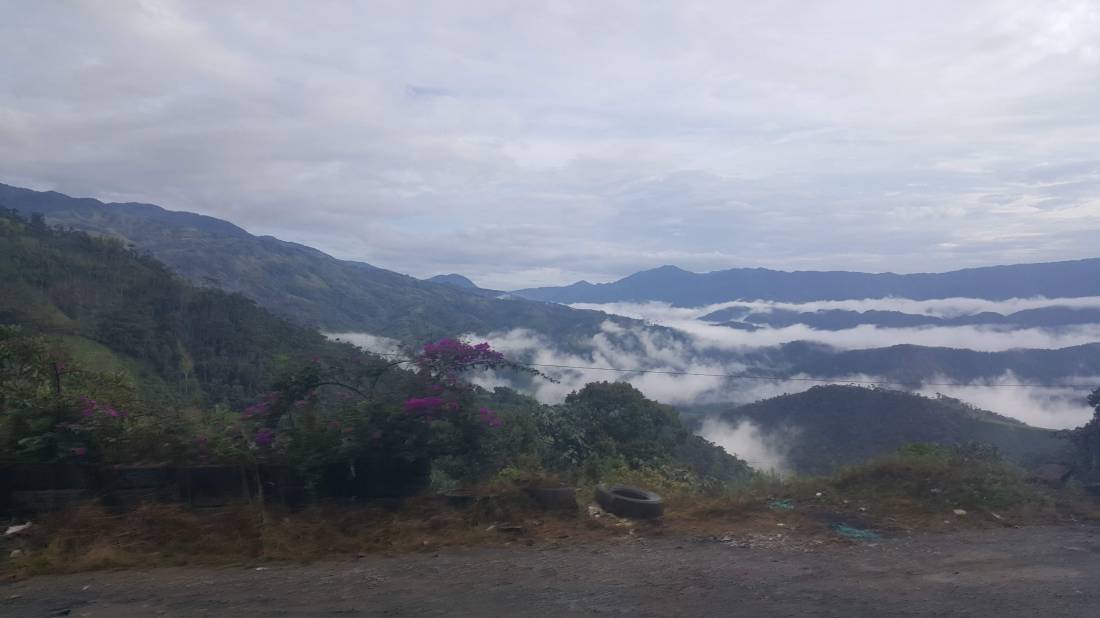This past weekend, I have been in el Cafetero, Colombia´s mountainous coffee-region, primarily for a run I was taking part in on Sunday. At the time of writing, I am actually trying to ascertain whether I will receive any prize money for a third-placed finish….fingers crossed. The run set off and finished in Pereira, the capital of el Eje Cafetero, and took in the surrounding mountains. Indeed, the first 12km felt like a continuous ascent until we reached around 2000m (we started at around 1300 or 1400m, not sea level!) in increasing heat. It did mean, however, that the views were stunning and that the last 15km was pretty much downhill – or at least flat – the whole way home.
Arriving in Santa Rosa de Cabal on Friday evening, after experiencing a delayed and windy journey from Medellín, I was able to take in the local thermal springs on Saturday. It was perfect preparation for Sunday´s race and ensured I turned up in Pereira relaxed and cleansed.
The rest of the past couple of weeks has been relaxed and I´ve had the chance to do things that I haven´t since arriving, like taking the cable car from Medellín to Parque Arví, an extensive nature park on the outskirts of the city. I did a distinctly average walking-tour of Medellín with Emanuel, a student from UCO, and I was also able to take in Medellín´s impressive alumbrados (Christmas Lights). Focusing on biodiversity as a theme, the lights on show in the city´s Parque Norte celebrated all of the flora and fauna that Colombia has to offer. Talking of lights, the 7th of December also marked Día de las Velitas (Candles) in Rionegro, and all over Colombia. Celebrating the Immaculate Conception, households spill out onto the streets to show off their candle displays. The area of Porvenir was particularly impressive. Its narrow streets provide the perfect stage for the light displays, as all cars are forced to play second fiddle to the candles. Día de los Velitas also happens to coincide with Rionegro´s annual fiestas. This year, the main square staged 4 nights of live music, with a different genre each night. Andrés and I headed to the first night – salsa – with Colombia´s answer to Barry Manilow belting out some seemingly well-known hits…
I also checked out Rionegro´s Modern Art Museum again, as its currently hosting an exhibition displaying entries into the town´s 25th International Caricature Competition, which takes place at the end of November. The festival commemorates Ricardo Rendón through its promotion of current artists´work. Rendón was born and raised in Rionegro, before rising to fame (and making a lot of money) as Colombia´s foremost caricaturist, working for some of Colombia´s most important publications. Tragically, he committed suicide at the age of 37, but he had already received international acclaim for his work.
Off to Santa Marta now for the rest of the week. Tomorrow, I start the Lost City trek, which traverses what I have been promised is a bug-ridden rainforest. I fly back to Rionegro on the 23rd, before possibly heading to Calí for fiestas. My only hesitation at this point is putting myself back through another lengthy and inevitably-delayed Colombian bus ride.




















































































